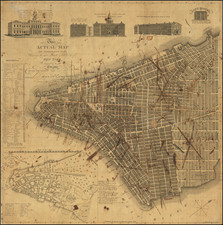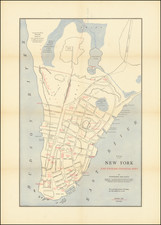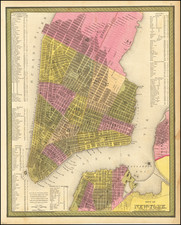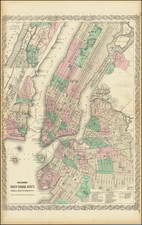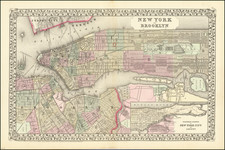Nice antique map of New York, as it was in the 17th century, showing Manhattan, Staten Island, and part of Long Island. This map was engraved to illustrate a French edition of J. Fenimore Cooper's The Water-Witch.
The map is beautifully engraved and shows a nice level of detail for the region. Broadway is shown connecting Manhattan to Harlem. A prison in New York is shown. Settlements on Long Island are named.
This map was part of an illustrated French set of J. Fenimore Cooper's works that included a number of maps. This map accompanies The Water-Witch, Cooper's 1830 novel set during the 17th century that covers the abduction of a woman by a pirate. The route of the ship described in the novel is shown on the map.
Pierre Antoine Tardieu (1784-1869), also known to sign his works as PF Tardieu, was a prolific French map engraver and geographer. The Tardieu family, based in Paris, was well known for their talent in engraving, cartography, and illustration. Pierre Antoine’s father, Antoine Francois Tardieu, was an established cartographer who published numerous atlases. His son is said to have collaborated with him for many years before establishing his own independent career.
Pierre Antoine Tardieu’s most famous work includes engravings of the islands of La Palma and Tenerife, for which in 1818 he was awarded a bronze medal by King Louis-Phillipe for the beauty and accuracy of his mapping. Other famous work includes his mapping of Louisiana and Mexico, engravings of Irish counties, maps of Russia and Asia, and his highly celebrated illustrations of all the provinces of France. He was also the first mapmaker to engrave on steel.
Tardieu was a popular map engraver in his lifetime, enjoying the patronage of the likes of Alexander von Humboldt and respect among his peers. In 1837, he was appointed the title Chevalier de la Légion d’honneur. As was written in his obituary in the Bulletin of the Geographical Society of France, he was renowned for his combination of technical talent and scholarly research skills and praised for furthering his family’s well-respected name in the scientific arts.









